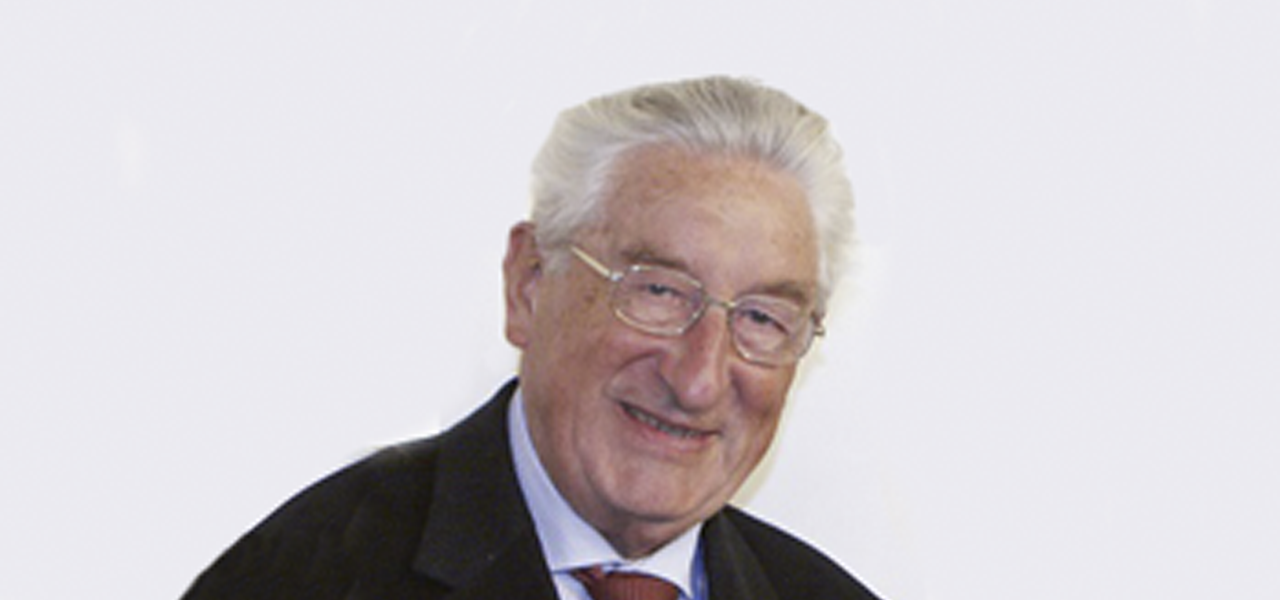EASL mourns the passing of Prof. Karl-Hermann Meyer zum Büschenfelde – A great leader in European Hepatology

On the 1st of September 2019, Professor Karl-Hermann Meyer zum Büschenfelde passed away shortly before his 90th birthday. He will be remembered as a pioneer in liver immunology and as one of the most prominent clinician scientists and mentors within the international hepatology community.
“MzB” as he was warmheartedly nicknamed by colleagues and friends trained twice, both as a Veterinarian and as a Doctor. He attended the School of Veterinary Medicine in Hannover and Munich, Germany, where he graduated in 1955, before going on to study Medicine in Cologne and Hamburg (1956–60). He started his clinical career as an intern in Hamburg, before becoming resident in Internal Medicine at the University of Marburg. Here, he met his long-term mentor Paul Schoelmerich, whom he followed to the University of Mainz in 1963. In collaboration with Dr. Kössling, a pathologist at the University of Mainz, and his first M.D. student Uwe Hopf, he developed the first animal model for autoimmune hepatitis1,2. In 1969–70 he joined P.A. Miescher as visiting Professor in the World Health Organization laboratories at the University of Geneva, Switzerland, where he finished further work on his autoimmune hepatitis model, including the discovery of liver specific protein “LSP”3. He consistently worked on the hypothesis that autoimmune hepatitis is based on a loss of tolerance towards the patient’s own liver. After returning to Mainz, he brought together a group of young clinician scientists who had received postdoctoral training in various basic research laboratories. This nucleus of the “MzB group” soon became visible through landmark publications on liver immunology, viral hepatitis4 and various aspects of autoimmune liver disease, with notable members including Uwe Hopf, Wolfgang Arnold (previous secretary and treasurer of EASL), Thomas Hütteroth, and Rainer Eckhardt. In subsequent years, after translation of his discoveries in the animal model to human autoimmune hepatitis, he had raised interest in liver immunology at various institutions around the globe5. Over the years he also sent many of his fellows for postdoctoral training abroad, mainly to the United States. In Mainz, a number of visiting scientists joined his group, including prominent EASL members like Alfredo Alberti (Padua, Italy) and Christian Trepo (Lyon, France).
In 1977 “MzB” became Professor and Chairman at Klinikum Charlottenburg, University Hospital of the Free University of Berlin, which was, at the time, located in a divided city surrounded by “the wall”. The University Hospitals of the Free University of Berlin are now part of the Berlin University Hospitals “Charité”. In Berlin, the group grew further with the arrival of George Hess (from the NIH, Bethesda, USA), Guiliano Ramadori (from Bologna, Italy), Thomas Poralla (from Berlin), and myself, to name a few.
In 1981 “MzB” returned to Mainz to become Chairman of Medicine at the First Department of Medicine of the Johannes Gutenberg University. By that time “MzB” and his senior scientists were active and well-established members of EASL and the international hepatology community. In Mainz, he established further research groups mostly, but not all, focusing on liver diseases; beyond hepatology, he established groups focusing on gastrointestinal and liver oncology, nephrology, and rheumatology. In addition, he established basic research professorships (e.g. basic immunology and biochemistry) within his department in order to support his clinician scientists. Guido Gerken and Ansgar Lohse are just a couple of the principle investigators known to the liver community who joined the “MzB department” at that time.
While the department grew, “MzB” – as department chair – became heavily involved in local, national and international research policy. He became chair and coordinator of the interdisciplinary collaborative research project SFB 311 “Immunopathogenesis” funded by the German Research Foundation (DFG). Later he became member of the DFG Senate (1989-92) and DFG’s Vice President (1993-99). In 1985 he founded the German Association for the Study of the Liver (GASL), and in 1989 he was president of the German Society of Gastroenterology (DGVS). His major contributions to hepatology and, in particular, to EASL were honoured by his appointment as Honorary President of EASL in 2005. He was also an honorary member of the DGVS and German Society of Internal Medicine (DGIM), Fellow of the Royal College of Physicians (FRCP), Doctor honoris causa (Dr. h.c.) of the University of Leuven, Belgium, and recipient of the Order of Honour (Bundesverdienstkreuz am Bande) of the Federal Republic of Germany.
“MzB” was a charismatic leader and mentor respected globally. He may be regarded as a founder of liver immunology and someone who had a great and long-lasting impact on many leaders and groups around the world. He was a regular attendee of the annual AASLD liver meetings from 1980 and particularly loved travelling to Chicago. Born in 1929 and growing up in internationally isolated Germany, transatlantic travel and the English language were not part of his “cradle environment”, as a German idiom goes. The fact that many of his students hold chairs in several disciplines of academic medicine, with a particular emphasis on hepatology, is a testament to his mentorship. In 1997 Karl Hermann retired from his position as chairman of medicine in Mainz and soon thereafter moved back to Berlin with his wife Renate to enjoy the inspiring atmosphere and the growing international flair of reunified Berlin.
Karl Hermann is survived by his beloved wife Renate, his three children and their families.

